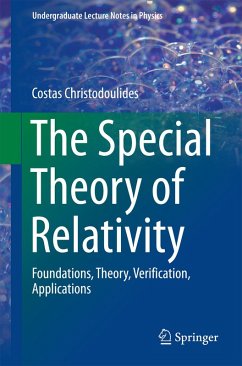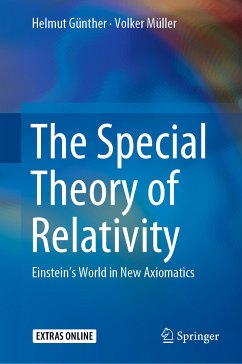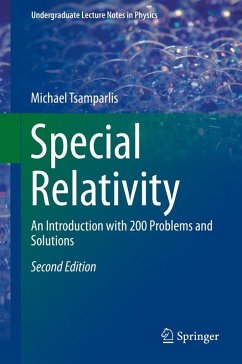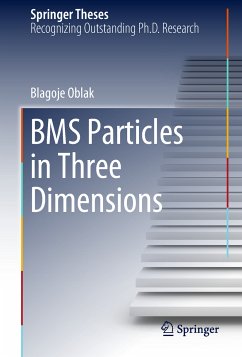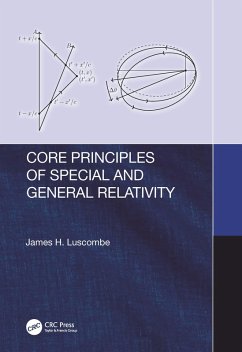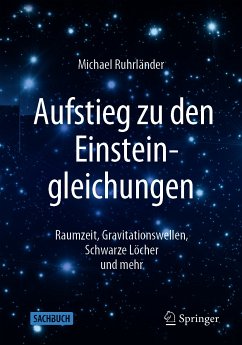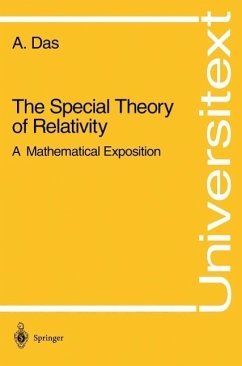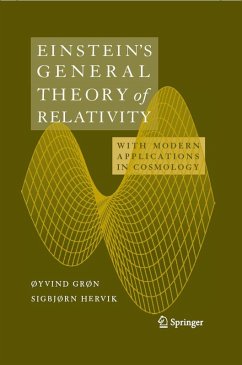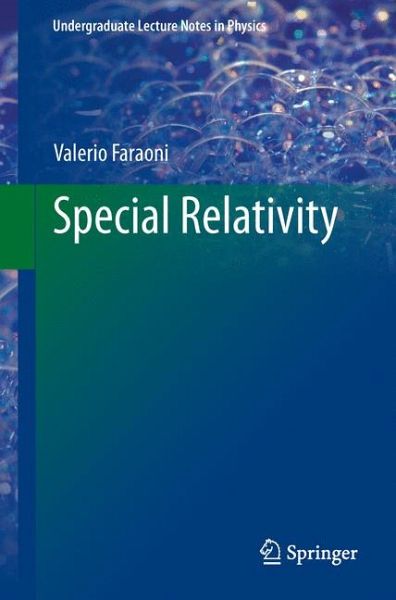
Special Relativity (eBook, PDF)
Versandkostenfrei!
Sofort per Download lieferbar
44,95 €
inkl. MwSt.
Weitere Ausgaben:

PAYBACK Punkte
22 °P sammeln!
This book offers an essential bridge between college-level introductions and advanced graduate-level books on special relativity.It begins at an elementary level, presenting and discussing the basic concepts normally covered in college-level works, including the Lorentz transformation. Subsequent chapters introduce the four-dimensional worldview implied by the Lorentz transformations, mixing time and space coordinates, before continuing on to the formalism of tensors, a topic usually avoided in lower-level courses. The book's second half addresses a number of essential points, including the co...
This book offers an essential bridge between college-level introductions and advanced graduate-level books on special relativity.
It begins at an elementary level, presenting and discussing the basic concepts normally covered in college-level works, including the Lorentz transformation. Subsequent chapters introduce the four-dimensional worldview implied by the Lorentz transformations, mixing time and space coordinates, before continuing on to the formalism of tensors, a topic usually avoided in lower-level courses. The book's second half addresses a number of essential points, including the concept of causality; the equivalence between mass and energy, including applications; relativistic optics; and measurements and matter in Minkowski space-time. The closing chapters focus on the energy-momentum tensor of a continuous distribution of mass-energy and its co-variant conservation; angular momentum; a discussion of the scalar field of perfect fluids and the Maxwell field;and general coordinates.
Every chapter is supplemented by a section with numerous exercises, allowing readers to practice the theory. These exercises constitute an essential part of the textbook, and the solutions to approximately half of them are provided in the appendix.
It begins at an elementary level, presenting and discussing the basic concepts normally covered in college-level works, including the Lorentz transformation. Subsequent chapters introduce the four-dimensional worldview implied by the Lorentz transformations, mixing time and space coordinates, before continuing on to the formalism of tensors, a topic usually avoided in lower-level courses. The book's second half addresses a number of essential points, including the concept of causality; the equivalence between mass and energy, including applications; relativistic optics; and measurements and matter in Minkowski space-time. The closing chapters focus on the energy-momentum tensor of a continuous distribution of mass-energy and its co-variant conservation; angular momentum; a discussion of the scalar field of perfect fluids and the Maxwell field;and general coordinates.
Every chapter is supplemented by a section with numerous exercises, allowing readers to practice the theory. These exercises constitute an essential part of the textbook, and the solutions to approximately half of them are provided in the appendix.
Dieser Download kann aus rechtlichen Gründen nur mit Rechnungsadresse in A, B, BG, CY, CZ, D, DK, EW, E, FIN, F, GR, HR, H, IRL, I, LT, L, LR, M, NL, PL, P, R, S, SLO, SK ausgeliefert werden.




